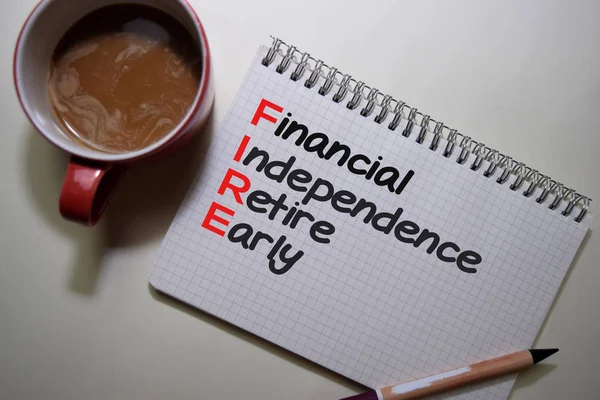Financial Independence, Retire Early (FIRE): Is It Right for You?
The concept of Financial Independence, Retire Early (FIRE) has gained significant attention in recent years as more people seek to break free from traditional work patterns and achieve financial freedom. Rooted in the desire to live life on one’s terms, the FIRE movement encourages aggressive saving, investing, and lifestyle adjustments to reach a point where work becomes optional much earlier than the standard retirement age. But is FIRE right for you? In this article, we will explore the philosophy behind the FIRE movement, the steps required to achieve financial independence, and the challenges that come with pursuing this ambitious goal.
Understanding the FIRE Movement
The FIRE movement is built on the principle of saving and investing a substantial portion of one’s income—often 50% or more—with the goal of reaching financial independence as quickly as possible. Financial independence is defined as having enough savings and investments to cover living expenses without relying on active income from employment. Once this level of financial security is achieved, proponents of FIRE believe that one can choose to retire early or pursue work that aligns with their passions, regardless of income.
Core Philosophy of FIRE:
- Frugality: A key aspect of the FIRE movement is living below your means. This often involves making significant lifestyle adjustments, such as downsizing your home, limiting discretionary spending, and focusing on experiences rather than material possessions.
- Aggressive Saving: FIRE advocates typically save and invest a large portion of their income—sometimes 50% or more. This requires a strong commitment to budgeting, reducing expenses, and maximizing savings.
- Investing Wisely: To achieve financial independence, FIRE followers focus on building a robust investment portfolio that can generate passive income. This might include investing in low-cost index funds, real estate, or other income-generating assets.
- Mindful Consumption: The FIRE movement encourages a minimalist approach to consumption, where individuals prioritize spending on what truly matters to them while cutting out unnecessary expenses.
Steps to Achieve Financial Independence
Achieving financial independence through the FIRE movement requires discipline, planning, and a willingness to make sacrifices in the short term for long-term benefits. Here are the key steps involved:
1. Set Clear Financial Goals:
Determine how much money you need to achieve financial independence. This involves calculating your annual living expenses and multiplying that number by 25 to 30, depending on your desired withdrawal rate (usually 3-4%). This calculation gives you the amount of savings you’ll need to sustain your lifestyle without active income.
2. Create a Detailed Budget:
Develop a budget that allows you to save a significant portion of your income. Track all expenses, identify areas where you can cut back, and allocate the savings toward investments. The goal is to maximize your savings rate while maintaining a lifestyle that is sustainable in the long term.
3. Increase Your Income:
Boosting your income can accelerate your path to financial independence. This might involve seeking higher-paying job opportunities, starting a side business, or investing in education and skills that enhance your earning potential.
4. Invest Strategically:
Investing is a cornerstone of the FIRE movement. Focus on building a diversified portfolio that aligns with your risk tolerance and long-term goals. Many FIRE enthusiasts prefer low-cost index funds, real estate, or dividend-paying stocks, as these investments can generate steady returns and passive income over time.
5. Monitor and Adjust:
Regularly review your progress toward financial independence. Make adjustments to your savings rate, budget, and investment strategy as needed. Life circumstances and market conditions can change, so it’s essential to stay flexible and responsive to new challenges and opportunities.
Challenges of the FIRE Movement
While the idea of retiring early is appealing, the path to FIRE is not without its challenges. Here are some potential obstacles you might encounter:
1. Sacrifices in Lifestyle:
Achieving FIRE often requires a frugal lifestyle, which can be difficult for those accustomed to higher levels of spending. The need to cut back on luxuries and make do with less can be challenging, especially when social pressures encourage consumerism.
2. Longevity Risk:
One of the biggest concerns for those pursuing FIRE is outliving their savings. Retiring early means relying on your investments for a longer period, which increases the risk that your funds might not last as long as you need them to. Proper financial planning, including conservative withdrawal rates and continued investment growth, is crucial to mitigate this risk.
3. Market Volatility:
FIRE relies heavily on the performance of your investments. Market downturns, economic recessions, and other financial crises can significantly impact your portfolio’s value. Ensuring your investment strategy includes diversification and risk management is vital to weather these storms.
4. Social and Emotional Considerations:
Retiring early can lead to social isolation, as most people you know may still be working. Additionally, the sudden lack of structure that comes with leaving the workforce can be challenging to navigate. It’s essential to have a plan for how you will spend your time and stay engaged with your community.
5. Healthcare Costs:
Healthcare is a significant concern for early retirees, particularly in countries where healthcare is tied to employment. Planning for healthcare expenses, including insurance and out-of-pocket costs, is a critical aspect of achieving and maintaining financial independence.
Is FIRE Right for You?
The FIRE movement is not a one-size-fits-all solution. Whether or not it’s right for you depends on your financial goals, risk tolerance, and willingness to make lifestyle changes. Here are a few questions to consider:
- Are you willing to make significant sacrifices in your current lifestyle to achieve early retirement?
- Do you have the discipline to stick to a strict savings and investment plan?
- Are you prepared for the financial risks and uncertainties that come with relying on your investments for long-term income?
- How will you spend your time in early retirement? Do you have passions or pursuits that will keep you fulfilled and engaged?
If you’re motivated by the idea of financial freedom and willing to make the necessary sacrifices, FIRE could be a viable path for you. However, it’s essential to approach this goal with a clear understanding of the challenges involved and a well-thought-out plan to overcome them.
Conclusion
The Financial Independence, Retire Early (FIRE) movement offers an enticing vision of life free from the constraints of traditional work. By embracing frugality, aggressive saving, and strategic investing, many people have successfully achieved financial independence and retired years or even decades ahead of schedule. However, the path to FIRE is not without its challenges, including lifestyle sacrifices, financial risks, and social considerations. Whether FIRE is right for you depends on your personal goals, financial situation, and willingness to navigate these challenges. With careful planning and disciplined execution, FIRE can be a rewarding journey toward a life of greater freedom and flexibility.


